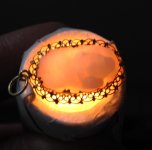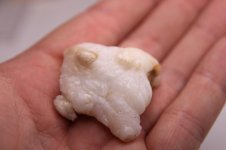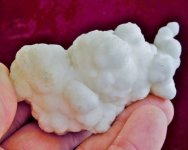Hello Pearlfriends!
I've got a curious new find...
What I think I have here is a non-nacreous pearl. What this pearl resembles most closely is a lump of dried candle wax, or a very small petrified ghost, but I'm pretty sure some of you knowledgeable peeps here will be able to tell me what this really is, any hints would be most appreciated.
At first I found it a little ugly, but the more I look at it, the more lovely it is. It is in a custom 15ct gold filigree mount (15ct was used in the UK 1854-1932) and the pearl itself measures 18mm by 11mm.
Has anyone seen anything like this before or could give me any pointers to its origin?
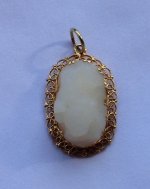
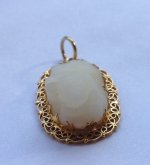
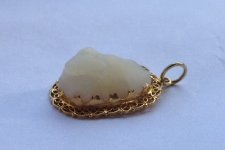
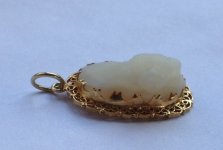
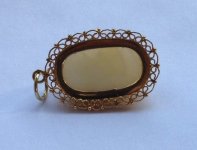
I've got a curious new find...
What I think I have here is a non-nacreous pearl. What this pearl resembles most closely is a lump of dried candle wax, or a very small petrified ghost, but I'm pretty sure some of you knowledgeable peeps here will be able to tell me what this really is, any hints would be most appreciated.
At first I found it a little ugly, but the more I look at it, the more lovely it is. It is in a custom 15ct gold filigree mount (15ct was used in the UK 1854-1932) and the pearl itself measures 18mm by 11mm.
Has anyone seen anything like this before or could give me any pointers to its origin?





Last edited:

